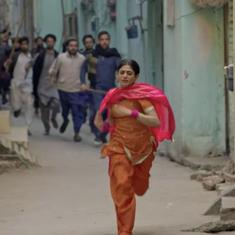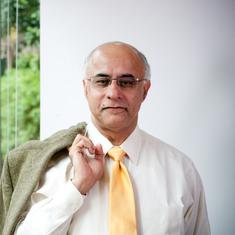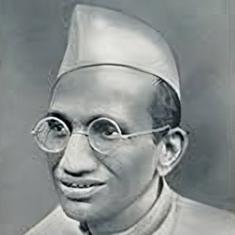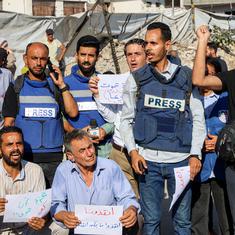As protests broke out in Gujarat after Hardik Patel was detained, the government pressed mute. On Saturday, the Gujarat government decided to suspend mobile internet services, restoring them a day later in all parts of the state except for Mehsana district, the epicentre of the unrest. It seems to be a repeat of last month. The Patidar protests had reached a crescendo after Hardik Patel’s mammoth rally on August 25 and as the police cracked down, WhatsApp and internet services took a hit. This had become necessary, the police explained this week, to “tackle the law and order situation and curb the spread of rumours”.
It was the same reasoning we heard in 2010, when stone-pelting crowds took to the streets of Kashmir. In 2012, when Muslims and Bodos clashed in Assam and railway stations in faraway Bangalore filled up with people from the North East, anxious to back home. Even earlier this month, when the Manipur government passed three bills that would effectively establish the Inner Line Permit system in the state and the hills erupted in protest.
In Kashmir and the North East, where violent insurgencies have spanned decades, mobile and internet bans are a routine part of life. Kashmir, for instance, lifted a four-year ban on prepaid SMSs only in 2014. Post-paid messages were banned for six months after the protests of 2010. Every Independence Day, every Republic Day, every time there is the possibility of protest, channels of communication are blocked. The cell phone towers themselves have become a site of conflict. Militants attacked the towers in Sopore this May, disrupting services across Kashmir, because cell phones can also double up as instruments of state surveillance.
Rumour and resistance
But the banning state has a great fear of rumour, that grey-headed ghost curling around street corners, running through angry crowds. Ever since the fall of the Bastille, rumours have been the catalyst to revolution, or at least of public unrest.
Timothy Tackett, writing on the September Massacres in Paris in 1792, describes how gossip and hearsay gathered a new intensity and mutated into rumours during the French Revolution, how they shaped popular consensus about the killing of hundreds of prisoners. Laura Bliss examines how race riots in the United States, from the Civil Rights era up to the Ferguson protests, have been propelled by rumours, both of police brutality and of murderous mobs. A US government study from the 1960s held that 65% of riots had been triggered by rumours.
In times of uncertainty, a rumour is the people’s way of making sense of events, putting in place their own narrative when there is no reliable information to be had, creating a consensus, no matter how fleeting. It is essentially a social phenomenon, taking shape when there is a gathering of people and transmitted collectively – the watercooler effect, as psychologist Nicholas DiFonzo puts it.
WhatsApp and Twitter are the watercoolers of our times, and text messages the virtual crowds. In 2012, hate messages and videos of the violence spread fear among North Eastern students in Bangalore. When communal riots broke out in Muzaffarnagar, a two-year-old video of a killing in Pakistan was used to fuel tensions in northern India. This September, the Manipur government reportedly blocked the internet and text messages because of a rash of Facebook statuses from Churachandpur, Tamenglong and Chandel, the worst affected districts. They allegedly spoke of police stations and municipal offices being burnt, and asked others to do the same in their districts.
This week in Gujarat, government officials were reportedly scared that videos of police violence would tumble out. The government should probably worry, because social media is known to create infinite images. As videos and messages are shared across profiles and news feeds, the number of police stations burnt down seem to grow in number, a crowd of 40 becomes a mob of 200, the lathi charges and arrests snowball. These proliferating images often become force multipliers in a charged situation.
Forbid the bans
But rumours have become a government alibi for imposing bans, says one exasperated observer in Kashmir, blocking communication is a blunt instrument for a small part of the problem. For rumours are symptoms, not causes, building on existing fears and beliefs.
Clamping down on communication has psychological costs beyond the immediate conflagration. In Kashmir and the North East, people have accepted that communication is just another one of the many freedoms that the state will take away from them. Insidiously, the bans have added to the sense of siege felt by people living through insurgencies and alienated these populations from the state.
Besides, bans won’t stop rumours. Cutting off channels of communication also hampers reporting and silences the media. This information vacuum becomes the breeding ground for rumour. Shyam Tekwani and Peng Hwa Ang, investigating the effects of the cell phone ban in Nepal in 2005, spoke to newspaper editors who had grappled with it. People gathered in each other’s homes to exchange what information they could gather. “There was a lot of chatting on the streets,” one editor said.
Governments need to find other ways to curb the growth of misinformation. A rumour is often an eruption of the irrational into the public sphere, which needs to be countered calmly, with facts and reassurance. Babloo Loitongbam, director of Human Rights Alert, based in Manipur, recalls how he tried to upload the three contentious bills passed by the Manipur government this month but found he could not do so because internet services had been suspended. Had people known the contents of the bills, he says, there might have been an informed discussion instead of violence and arson. “In real life, mohalla sabhas and peace committees play a crucial role in calming tensions and countering misinformation, why not do something similar online?” Loitongbam asks.
Governments needs to make space for these healing processes, instead of being afraid of smoke and mirrors.










